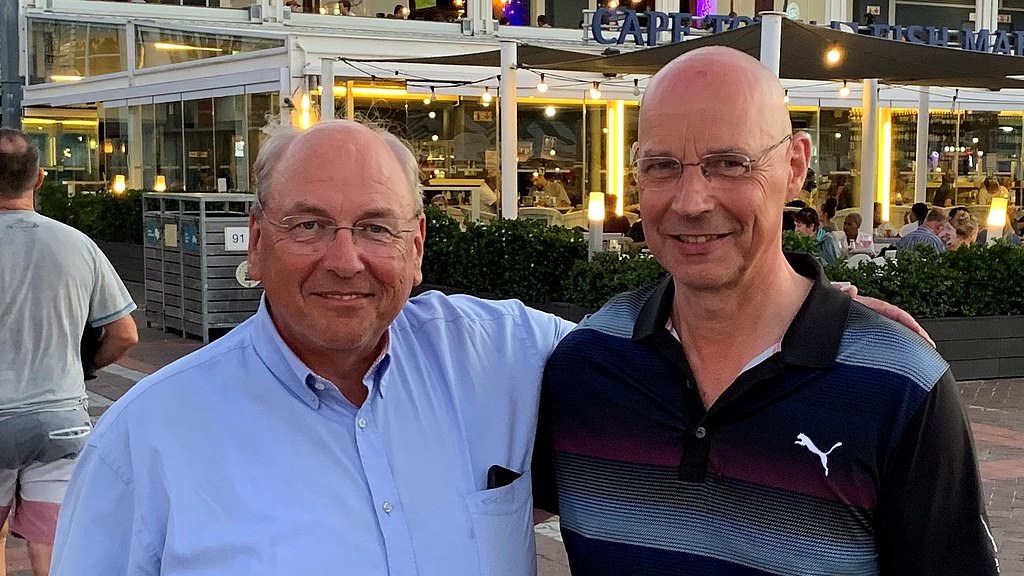Two friends and why we decided for a jet fuel powered aircraft
We, Holger Kautz and Marcel Warmerdam, have known each other since 2007. We flew different Avgas powered aircraft and made many sightseeing flights, such as to the North Cape, Poland, Canary Islands, Egypt, Oshkosh and Abu Dhabi. It was during these trips, we noticed we had a problem. The limited availability of Avgas. Jet fuel is available in many places, except for the "small" and difficult airports in South Africa. We didn’t want to spend millions for a turbine and started analyzing our options. We finally decided to buy a Diamond DA42‐VI. Again, a plane with some restrictions, i.e. the wingspan, but with lots of advantages for our needs: high speed, low maintenance, low jet fuel price and fuel consumption and an extensive range of 1,215 Nm.
Fun fact when flying a jet fuel aircraft: it will be refueled at the parking by a 30 m3 refueling truck. When we told the truck driver, please fill up max, he was disappointed after a maximum of 250 liters. Though, we are very happy with the efficient engines of our DA42-VI.
Preparations
In Europe, flying is relatively easy. One submits a flight plan, waits for the acknowledgement, brings along his or her passport and you’re ready for take‐off. If you fly outside Europe, it becomes a bit more difficult. You need overflight as well as landing permissions from the aviation authority of the particular country. You always have to enter via international airports – usually the major ones - where customs are available.
- Time: When you schedule for December, you must deal with winter conditions in Europe, i.e. ice formation on the airplane and cold weather. You'll encounter the sun when you fly over the equator and it will be warm in Africa. If you go in June/July, it will be warm in Europe and warm in Africa. We had to choose December because it was the best time in our agenda, but had to deal with ‐30°C.
- Routing: Outline the complete route before. So, you know about handling and customs at airports.
- Flight plans: Take the complete route printed and the General Declaration on paper with you.
- Visa: For many countries you would need a visa. However, in most countries it is not needed due to the “72 hours” rule for pilots.
- Vaccinations: Needed.
- Weather: The Ogimet website was our friend.
- Money: Bring enough cash in US Dollars.
- Annual check: Have the annual check done on your airplane.
- Extras: Take some spare parts (e.g. inner and outer tube of the front and main wheel), TKS fluid (not always available at African airports) and oil on board. Organize a satellite telephone.
- Insurance: Take care, because the civil servant at the airport will ask. Is the insurance of your airplane accurate, e.g. will it cover all countries?
- Gather information upfront: Talk to someone who has experience to fly such a trip.
- During the trip: When you arrive in a new country, the first thing you’d want to do: refuel the airplane and only then leave for the hotel. Do the handling yourself as much as possible to save costs.
(This list does not claim to be exhaustive and is mainly food for your thoughts.)
Our Route
We had planned for the following route, but had to make some changes on short notice:
EDLV (Weeze) Germany - LDSP (Split) Croatia - LGIR (Heraklion) Greece - HELX (Luxor) Egypt - OEJN (Jeddah) Saudi Arabia - HDAM (Djibouti) Djibouti - HAAB (Addis Abeba) Ethiopia - HKNW (Nairobi‐Wilson) Kenia - FLND (Ndola) Zambia - FLLI (Livingstone) Zambia - FBMN (Maun) Botswana - FBZZ (Xakanaxa) Botswana - FBMN (Maun) Botswana - FYWE (Windhoek) Namibia - FAUP (Upington) South Afrika - FASH (Stellenbosch) South‐Africa - FAGG (George) South Africa - FANS (Nelspruit) South Africa - FWLE (Lilongwe) Malawi - HTKJ (Kilimanjaro) Tanzania - HAAB (Addis Adeba) Ethiopia - OEJN (Jeddah) Saudi Arabia - HESH (Sharm‐el‐Sheikh) Egypt - LTAI (Antalya) Turkey - LHBP (Budapest) Hungary - EDLV (Weeze) Germany
Our journey
In Africa it all works slightly different than in Europe. We would get support from Mike Rose of White Rose Aviation who had arranged all the permits. We did the flight planning via Rocketroute and that works fine in Europe. Our tour was planned – we thought. A week before our departure we were told that Ethiopia had closed its airspace to planes under FL250. So, we had to amend our trip, including the flight plans and the permits. Our tour now went over Sudan and South Sudan. Therefore, we also had to re-arrange our insurance as this was checked regularly. In particular, Kenya was very alert on the insurance part. Our insurance excluded many countries due to the war, so keep this in mind. Finally, everything was arranged. We could start our trip. We weren’t too excited about our route over South Sudan, but it was the only option. Flying over the west side of Africa would have been a worse decision in our opinion.
Leg 1: EDLV (Weeze) Germany – LDSP (Split) Croatia / 684 nm, 03:57 hrs
On Thursday Nov 28th 2019 we took off from Weeze (Germany) continuing our route over the Alps. A stunning view with wonderful peaks full of snow. The Alps are very high, so we had to fly at FL160. After four hours, we landed at Split, Croatia. We had booked a very nice hotel in downtown Split for a very good price. The flight plan for the next leg was already arranged, so we could spend some time in town. Split is very clean and has a wonderful boulevard.
Leg 2: LDSP (Split) Croatia – LGIR (Heraklion) Greece / 660 nm, 03:30 hrs
On the next day we continued our route to Heraklion, Crete. We had a lot of tailwind and got an impressive ground speed of 238 kts compared to an overall ground speed of 189 kts. We had been to Heraklion before and expected an expensive handling. In 2018 we had to pay 185 Euro, just for landing plus marginal handling. 2019 we had to pay 286 Euro for the same handling at departure. If you want to visit Crete, you might try the airport of Chania.
Leg 3: LGIR (Heraklion) Greece – HELX (Luxor) Egypt / 793 nm, 04:34 hrs
On Saturday Nov 30th, 2019 we left Crete to continue our trip to Luxor in Egypt. Again, with tailwind reaching a maximum ground speed of 198 kts. If you fly over the desert, it gets quite monotonous over Egypt. Our complete flight was IFR and then you are completely guided. Egypt is still at war and is still not safe in the Sinai desert. So, everything is arranged with military precision. When we arrived at Luxor, we visited the Ramses Museum. In 2018 we had visited the valley of the kings with Tutankhamun. We also visited the Luxor Temple and Temple of Amon, all very beautiful. Hotels were relatively cheap, because there is still little tourism. They are quite simple and plain, as there is only little money to invest. At departure, we had to pay a ridiculous sum for landing and handling - very disappointing.
Leg 4: HELX (Luxor) Egypt – HSSS (Khartoum) Sudan / 632 nm, 03:50 hrs
On Sunday Dec 1st, 2019 we departed to Khartoum in Sudan. The flight was relatively boring, long legs over desert without short cuts due to restricted military areas. Luckily, we had a lot of tailwind. We flew at an altitude of FL110 to use the wind as much as possible. Surprisingly, this was the longest distance between the air controllers. Often, there is no radio communication available and in order to get someone on the line, you’d need to call the tower of an airport nearby. Sudan is 5.2 times the size of Germany but has only 2 international airports and 22 domestic airports in total. Germany has 186 airports with customs and 302 domestic airports. The distances are that large that you often fly without radio contact. You are also not visible on the radar, because they simply don't have radar in Africa, except for large airports. About 30 Nm before arriving at Khartoum, we got in contact with Khartoum approach, which guided us straight in. Perfectly arranged. We arrived at a major international airport which also is military. Since Sudan is still at war with South Sudan, this is a hot airfield. The handling was fast, but not cheap. We got to pay USD 1,104 including jet fuel, which only costs USD 0.68 a liter. The city doesn’t give a good impression. So, we booked the most luxurious hotel in Khartoum to be on the safe side. Sometimes you don’t have other options.
Leg 5: HSSS (Khartoum) Sudan – FLNW (Nairobi) Kenya / 1,220 nm, 07:01 hrs
On Monday Dec 2nd, 2019 we left Khartoum and continued our long trip over Sudan. We flew as planned to Lokichoggio in Kenya, where we wanted to refuel. With the Garmin G1000, you will be informed about the range with the remaining fuel. We had a lot of tailwind with an average speed of 183 kts at an altitude of 18,000 feet and a power setting of 60%. So, we were able to fly over South Sudan and go directly to Nairobi Wilson (afterwards it turned out to be a good decision). We flew over the Equator and it is a nice sensation to first see the needle counting down to the Equator and then counting up again when flying south. There, we had to deal with thunderclouds which turned out to be very forceful. Often we just flew past them, but sometimes you had no choice but to go through them. After a trip of 1,220 Nm and 7:01 hours, we still had a reserve of 15 gallons which is more than 1-hour reserve and arrived at Nairobi‐Wilson. This airport handles 30 arriving and departing planes per hour. Our visa had to be arranged and that took forever. After clearing the refueling and visa we went to a luxury camp, where we stayed for two days – relaxing and doing game drives. We saw all kinds of wild animals from a very close distance. A very beautiful area and Kenya is a developed country.
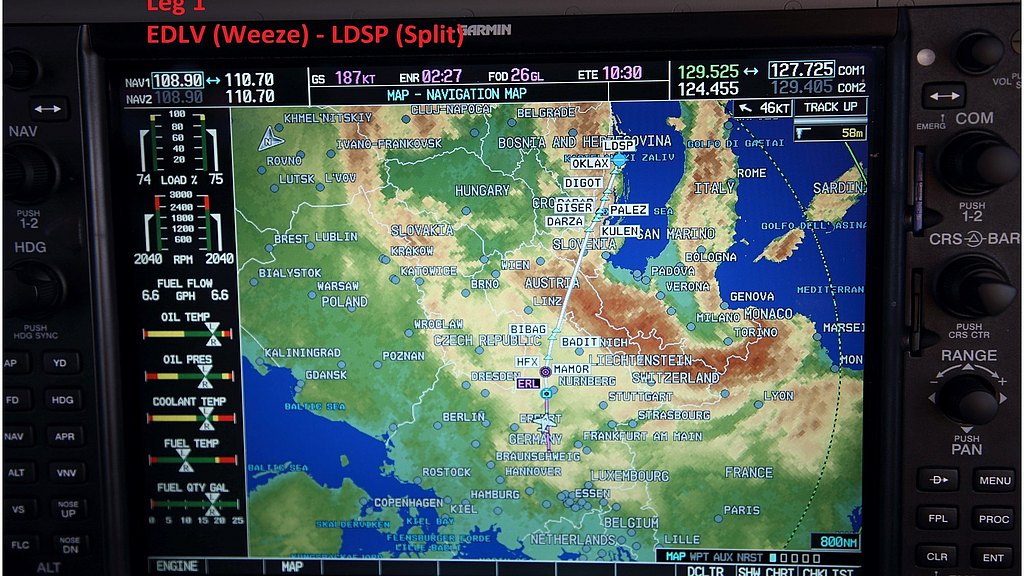
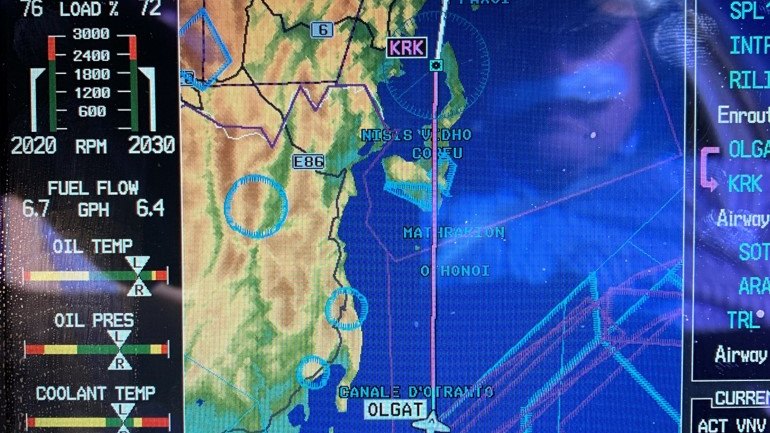
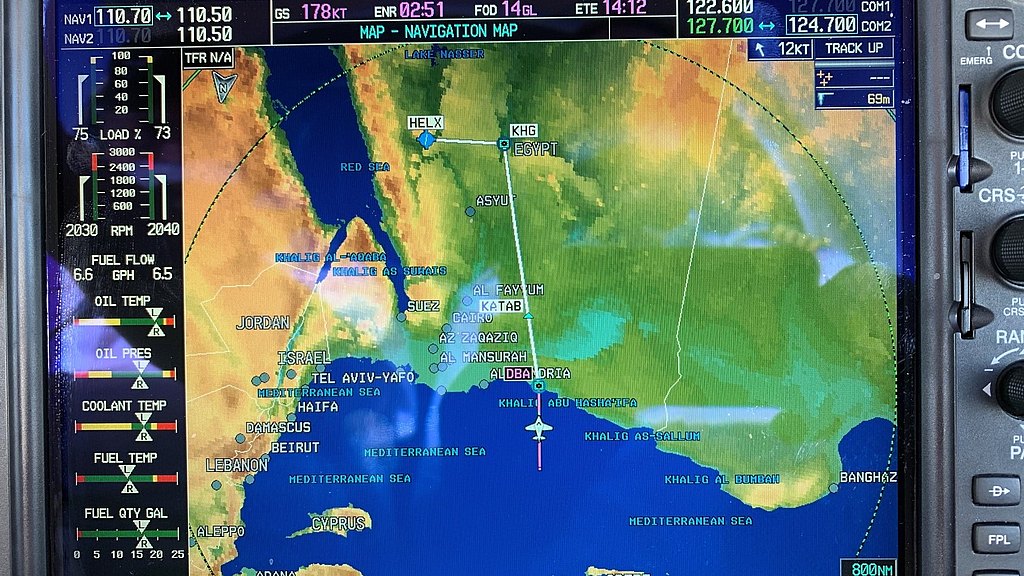
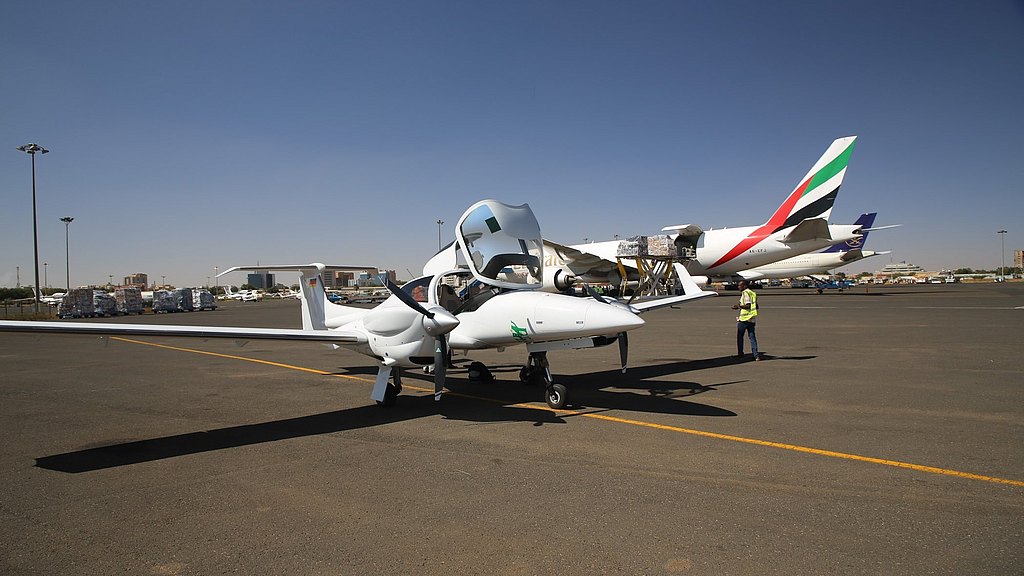
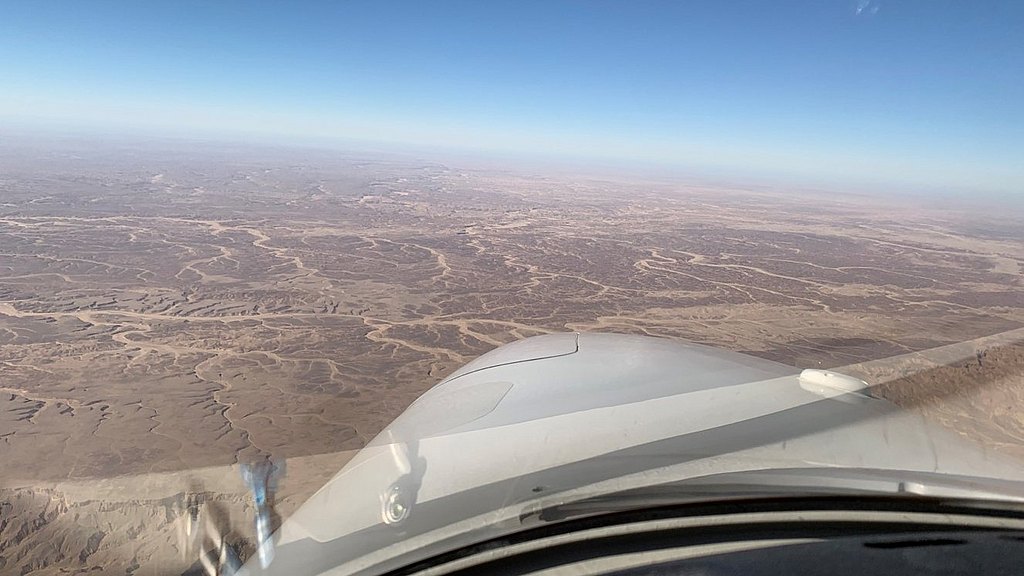
Leg 6: FLNW (Nairobi) Kenya – FLND (Ndola) Zambia / 870 nm, 05:11 hrs
On Wednesday Dec 4th 2019 we departed to Ndola in Zambia. Here we did the handling ourselves but be aware that this could cause problems. After all the checking was done, we could go to the plane. On the ground frequency you must talk fast and accurate, because of the busy airport. Ground frequency indicated that there was no flight plan, but via Rocketroute it was acknowledged. Because of the bad internet, the flight plan hadn’t been submitted and neither approved. Well, we just tried it over the radio. After 15 minutes of explaining, we got approval to take off and taxi. We were fully loaded with fuel, heavy and the runway was short. But after take‐off, we were well guided and flew between the building clouds towards Ndola in Zambia. This airfield is beautiful, well equipped, but it took a very long time before the refueling truck arrived. As we didn’t have handling, they will help you latest. After 1:30 hours we could depart to the hotel. The hotel was fine, and we could continue to Livingstone the next day.
Leg 7: FLND (Ndola) Zambia – FLLS (Livingstone) Zambia / 385 nm, 02:12 hrs
On Thursday Dec 5th 2019 we were supposed to fly from Ndola to Livingstone, since that's where the Victoria Falls are. Those waterfalls are huge, but in Zambia it hadn’t rained much all year long. So, the Victoria Falls were just half their capacity. These waterfalls are on a three‐country point between Botswana, Zambia and Zimbabwe. The water falls on the Zambia side and so the best view is at Zimbabwe side. Without having planned this in advance, Holger had booked a hotel in Zimbabwe. To fly to Zimbabwe is something different. It’s difficult again, because the airport there is badly equipped. So, we had made a good decision to fly to Livingstone. However, we had to cross the border with Zimbabwe, and we didn't have a visa for that. Those visas turned out to be no problem though. Then by taxi through no man's land to Zimbabwe. And of course, that is where you get scammed – you might know the stories, but the impressive views of the waterfalls made up for it.
Leg 8: FLLS (Livingston) Zambia – FBKE (Kazane) Botswana / 80 nm, 00:31 hrs
On Friday Dec 6th 2019 we decided that it was better not to fly to Maun (Botswana), but fly via the international airport Kasana in Botswana. We had to, because we were going to a domestic airport - Xakanaxa. An airport 1,200 m next to a tent camp, where we would go on game drives. This is a completely new airport and within 30 minutes we were airborne again and had cleared customs for Botswana. However, we had forgotten to pay the landing fees.
Leg 9: FBKE (Kazane) Botswana – FB92 (Xakanaxa) Botswana / 310 nm, 01:53 hrs
Finally, we flew on to Xakanaxa where we did six beautiful game drives seeing many wild animals. In Xakanaxa they have built a new airport and there was confusion because the Garmin G1000 indicates the old airport as the right one, but fortunately we landed at the right one. The runway is 1,200 m long and is built with sand and a top layer of lime, so the rainwater quickly drains away. Still, after landing and take‐off the plane was completely dirty.
Leg 10: FB92 (Xakanaxa) Botswana – FBMN (Maun) Botswana / 72 nm, 00:27 hrs
On Tuesday Dec 10th, 2019 after three days full of game drives and relaxing, we departed to Maun (Botswana). This is an international airport where they have three tank pillars next to each other, like a petrol station along the highway. At this is airport many Cessna Caravans are parked to serve all the airports in the Okavango delta. Very well arranged, but before we could leave, we had to pay Kasane's landing fees with a penalty on top of it. Well that happens.
Leg 11: FBMN (Maun) Botswana – FYWE (Windhoek) Namibia / 474 nm, 02:38 hrs
We flew on to Windhoek Eros. A flight of five hours. Namibia is quite monotonous, as it consists of desert almost entirely. So is Botswana, but Botswana has the advantage that the Okavango river flows from Angola into the desert from which the Okavango delta exists. Because of this, many wild animals live in Botswana. We landed at Windhoek Eros and after refueling we went to the hotel. Marcel has an acquaintance in Windhoek who told us some background stories and showed us the city.
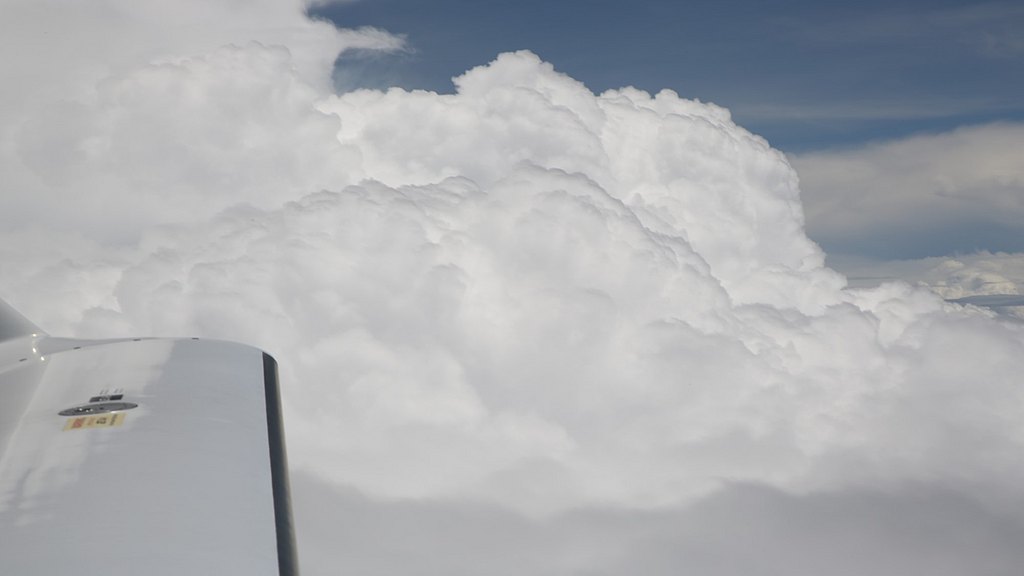
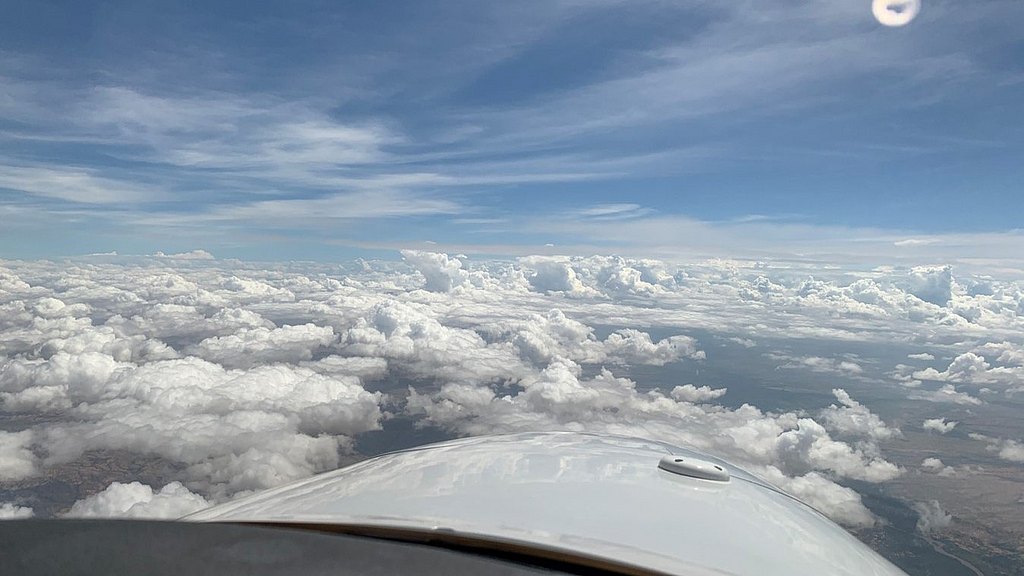
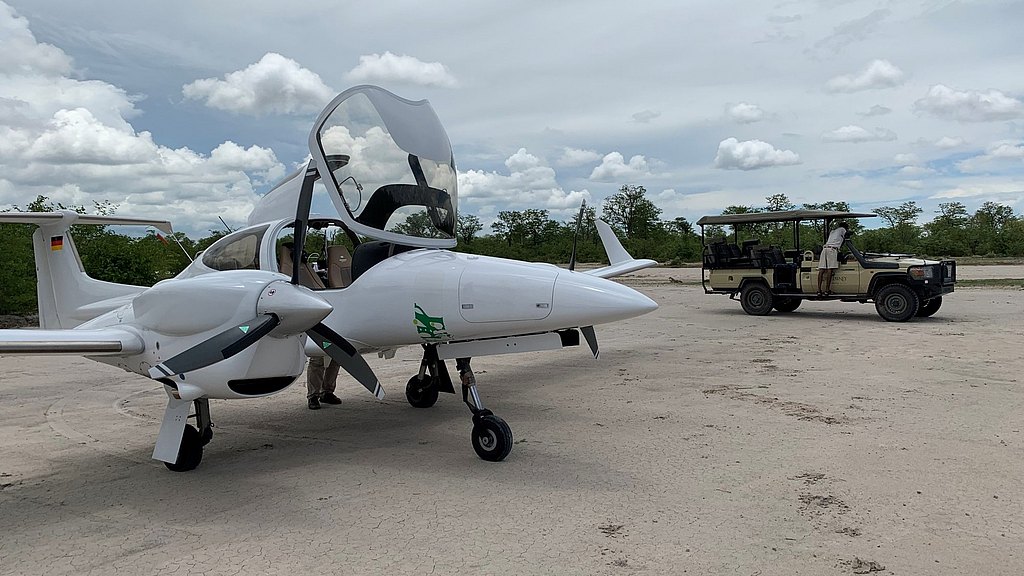
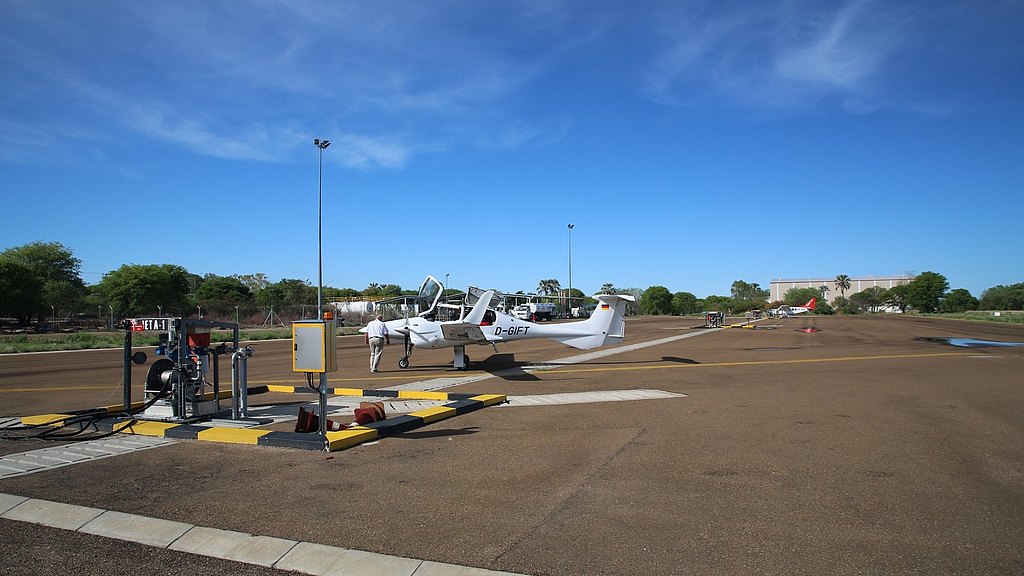
Leg 12: FYWE (Windhoek) Namibia – FAUP (Uppington) SA / 385 nm, 02:22 hrs
Leg 13: FAUP (Uppington) SA – FASH (Stellenbosch) SA / 375 nm, 02:13 hrs
On Wednesday 11th 2019 we were meant to leave for Cape Town, but parking and handling at the international airport of Cape Town for a few days meant a bill of more than thousand US dollars. That’s why we decided to land at Stellenbosch. A small domestic airport 40 km east of Cape Town. However, Stellenbosch has no customs and we had to visit a custom airport first. This was at Uppington, where we refueled, went through customs and paid landing fees within 45 minutes. That's how fast it can be in South Africa. Furthermore, this ia a nice airport and one of the few in South Africa that serves jet fuel. We continued our flight to Stellenbosch. The northern part of South Africa is mainly desert area. Approximately 50 km north of the southern edge of South Africa is a mountain ridge that is fairly high. You must cross it and then make a steep descend to Stellenbosch. The tower of Stellenbosch is not occupied. You can call, but no one will answer. So, we always indicated our position towards the airport frequency and landed on a direct final at the runway. Upon arrival there was a party going on at the airport. There were many local people and even a live singer was invited. It turned out that this happens every Wednesday afternoon. We met local people who were wondering that we were flying a “German" registered plane in South Africa and asked where we came from. They were amazed that we could fly such a large route in 13 days exactly as planned. We joined for 1:30 hour eating and drinking and then went to Cape Town.
Get some rest
Now we could get some rest. Our wives have arrived by airline to Cape Town and we would pick them up and travel around South Africa for 10 days. The plane was parked at Stellenbosch. Not fully refueled, because jet fuel was not available. We would fly from here to George, an international airport east of Cape Town. The ten days in South Africa were beautiful, with stunning views including a game drive on a private range. Although one should see it as a big zoo, because they know exactly how many animals there are and where they are. The game drives in Botswana were a much nicer experience. There are real wild animals, and you actually have to search for them.
Leg 14: FASH (Stellenbosch) SA – FAGG (George) SA / 200 nm, 01:03 hrs
On Thursday Dec 19th 2019 we drove to the airport of Stellenbosch by car to pay the landing fee in advance so we could leave the day after before the airport had opened at 7:00 am. We only had to pay 47 Euro for landing plus 10 days parking. Really cheap, good and excellent service. A special airport where we would like to go again.
Leg 15: FAGG (George) SA – FALA (Lanseria) SA / 594 nm, 03:19 hrs
On Friday Dec 20th, 2019 we arrived at the airport already by 7:00 am and left within 15 minutes towards George International Airport, where we could get jet fuel. Departure procedure was simple. According to the air controllers we had no flight plan. So, we left VFR and had to fly at 9,500 feet. In Africa you can't get the flight plans accepted via the internet, despite an acknowledgement of Rocketroute. Half an hour later at the next air controller we were able to fly at FL100. We landed on George, refueled, paid 10 euros for the landing and continued our flight. We had planned to fly to Nelspruit and then possibly do another game drive in the Kruger Park, but because we had flown at high altitude and therefore constantly needed oxygen, the oxygen tank was empty. A full oxygen tank with 1,800 PSi holds 40 hours of oxygen for two persons when used in combination with a mountain high system. We visited Bo Burger in Lanseria. He is a handler of Diamonds in South Africa. We were expected as early as possible because Christmas was coming up. In South Africa the people are generally Christian, so Christmas is a rather big thing. Lanseria is a large airport with at least 15 different maintenance companies. After some inquiries we ended up at Bo Burger, who refueled us in an hour and filled up the oxygen bottle. After that he took care of the hotel and we had dinner with him somewhere in the evening, where I ate the best steak ever.
Leg 16: FALA (Lanseria) SA – FWKI (Lilongwe) Malawi / 812 nm, 05:07 hrs
On Saturday Dec 21st, 2019 the flight plan was approved, and we left for Lilongwe in Malawi. Malawi is a poor country and is partly supported by the Chinese. They have built a lot there. The flight lasted five hours and we flew at a high altitude, where we experienced a lot of crosswind.
Leg 17: FWKI (Lilongwe) Malawi – HTKJ (Kilimanjaro) Tanzania / 695 nm, 04:05 hrs
On Sunday Dec 22nd 2019 we flew from Lilongwe to Kilimanjaro. We had the idea to do another game drive there, but after some discussions we decided to fly straight on to the next destination. If you fly in the area below the equator you are dealing with the Inter Tropical Convergence Zone. The Inter Tropical Convergence Zone, or ITCZ, is a belt of low pressure which circles the earth generally near the equator where the trade winds of the northern and southern hemispheres come together. It is characterized by convective activity which generates often vigorous thunderstorms over large areas. In this zone, you’ll have to deal with rising air and building clouds that are erratic from morning onwards. My examiner, commercial pilot at KLM, told me he would never dare to fly in this zone in such a small plane. He flies a Boeing 777 and indicates that even at an altitude of FL400, he often has to avoid the thunderclouds. My answer was: "You fly at a pre-determined time and are confronted with the ITCZ. We fly through this zone when it suits us. That means we fly as early as possible. Usually, we would fly around 7:00 am, as those clouds aren't active then." On this flight we had to deal with a temperature of the gearbox that just touched 115°C. Then the indication changed from green to yellow. Strange, because the other gearbox stayed 10°C lower. Instead of 100 kts, we then maintained 105 kts climbing speed. This is the only technical problem we had to deal with throughout our whole trip.
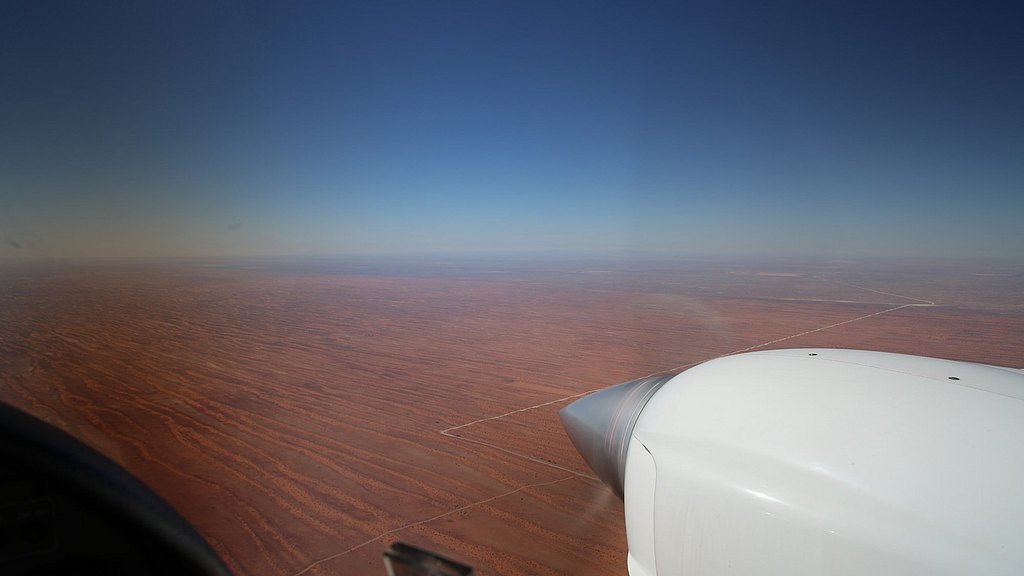
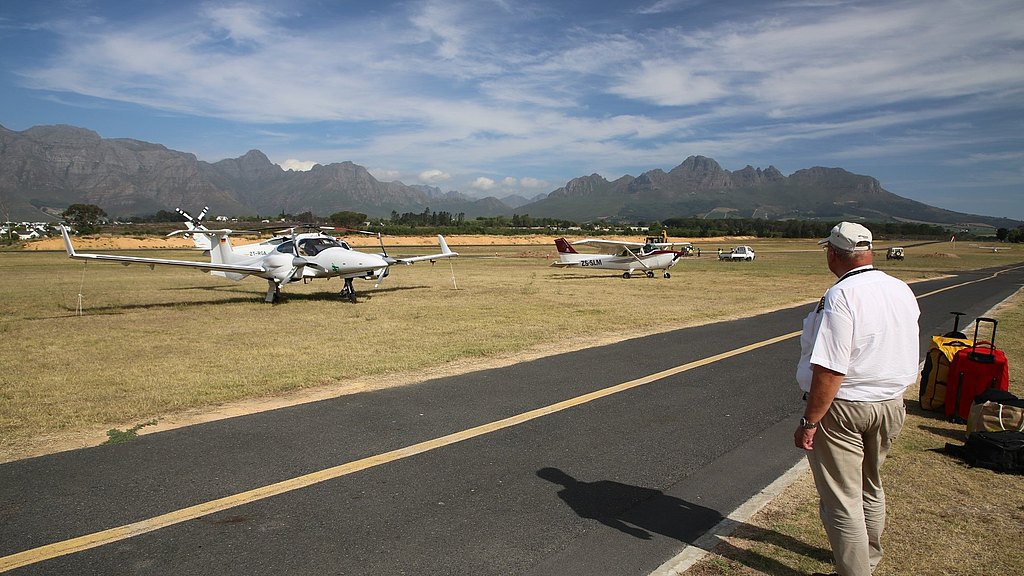
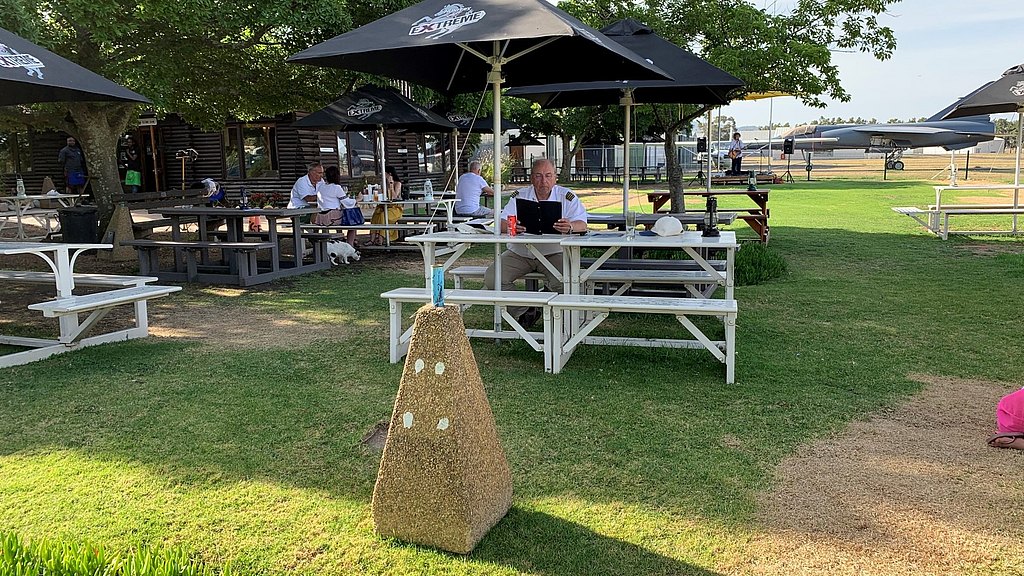
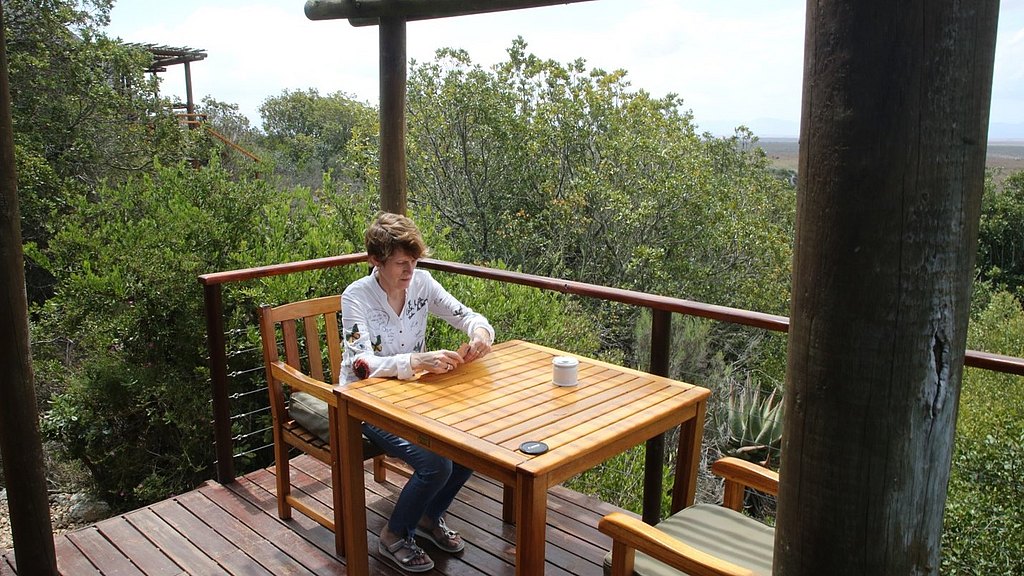
Leg 18: HTKJ (Kilimanjaro) Tanzania – HKKI (Kizuma) Kenya / 244 nm, 01:37 hrs
On Monday Dec 23rd 2019 we were at Kilimanjaro and had planned to fly to Kisumu. We didn't do a game drive as planned, so we could catch up for a day. We were ahead of our planning, causing us problems. Our permissions were issued to fly to Kisumu on Dec 24th. To change the date on the permit, the responsible person needed two hours to amend it. Everything is written down in a book. There is no central digital system yet. Kisumu is located at Lake Victoria and I expected to eat some nice fish. Well, I was wrong and I suffered from food poisoning for two days. Still we continued the next day.
Leg 19: HKKI (Kizuma) Kenya – HSSS (Karthoum) Sudan / 1,001 nm, 06:18 hrs
On Tuesday Dec 24th, 2019 we planned to fly to Lokichoggio Kenya. We called to see if we could get jet fuel. Well it wasn't available, and it would take three days to arrive in 200 L barrels. We didn't even bother to ask about the costs. That meant that we suddenly had to fly from Kizuma to Khartoum – quite a distance, because you can't exactly estimate what winds you will experience at what altitude. We reduced the engines to 60% which obviously decreases the overall speed, resulting in a longer flight. We were obliged to fly at 19,000 feet altitude, because we would fly over the war zone of South Sudan. So as high as possible. After 6:18 hours we landed at Khartoum. The refueling was again done with a fuel truck of 30 m3. In Africa, the jet fuel price varies between USD 0.60 and USD 0.80 per liter. In Khartoum we returned to the closest exclusive hotel.
Leg 20: HSSS (Karthoum) Sudan – HEGN (Hurghada) Egypt / 678 nm, 04:33 hrs
The next day the handling in Khartoum was fast and precise, but at a cost of more than thousand US dollar. The flight to Hurghada in Egypt was fast and as expected on many parts without radio contact. We also saw several similar buildings in the middle of the desert, with only one car and one helicopter next to it. I think these were prisons, that if you break out you first have to go through 200 km desert, so you'd better not escape. After a nice flight we landed in Hurghada Egypt, where we booked a nice hotel and stayed there for two days. Taking a break after a monstrous flight from South Africa to Egypt. The handling at the airport in Hurghada was also almost one thousand US dollar - ridiculous. Although, the airport itself is good. Just a few people, because tourism is not present in Egypt.
Leg 21: HEGN (Hurghada) Egypt – LTAI (Antalya) Turkey / 663 nm, 04:50 hrs
On Friday Dec 27th 2019 we continued to Antalya, Turkey. At departure, there was a small revolt with the customs/security of the airport, because we had a pocket knife in our luggage. That security guard could not manage to think like a pilot, on how to take a pocket knife in his luggage. We had never been to Turkey before. And we were somewhat surprised by the high handling of Heraklion. So, Antalya was a nice alternative. However, the landing fees at Antalya were very high with approximately USD 550.00. Antalya is a huge airport, three large runways and a huge parking lot for airplanes. Because of all the political struggles there is little tourism now. We were put on a parking lot of 1 x 1 km. At departure we had to push back the airplane for 15 m, because we were standing in front of a red line, which we were not allowed to cross. No airplane in front of us in around 250 m. Well then you push the plane 15 meters backwards by hand, right? NO, not allowed. It has to be done by a pushback truck, which costs EUR 250.00 extra. It also took an extra hour, because the flight plan was not correct in the airport’s system, despite the acknowledgement of Rocketroute. Antalya is a big city with nice hotels, relatively cheap, and European style.
Leg 22: LTAI (Antalya) Turkey – LHBP (Budapest) Hungary / 866 nm, 06:33 hrs
On Saturday Dec 28th 2019 after a long procedure at the airport waiting for an approval for the pushback and the flight plan we were allowed to depart. At first, we had to climb out to at least 14,000 feet. There was a lot of headwind. After a while we could descend to 10,000 feet. Although this flight was only 866 Nm long, we flew 6:33 hours. Reason was the low ground speed. Very boring and you get the feeling it doesn’t go forward. We landed at the airport of Budapest, where the handling was fast and efficient.
Leg 23: LHBP (Budapest) Hungary – EDLV (Weeze) Germany / 568 nm, 03:30 hrs
The next day, we refueled before departure as we didn't refuel immediately after landing at Budapest, because the handling indicated that the tanker was busy on a large aircraft and that it would take at least an hour. The refueling and preparation of the plane was done in 30 minutes and then we flew the last leg back home to EDLV.
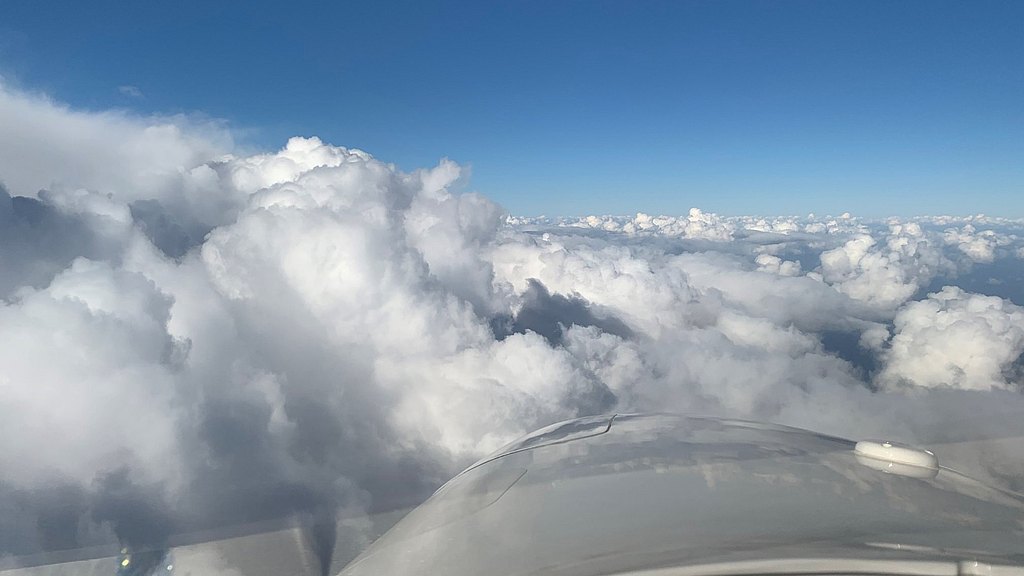
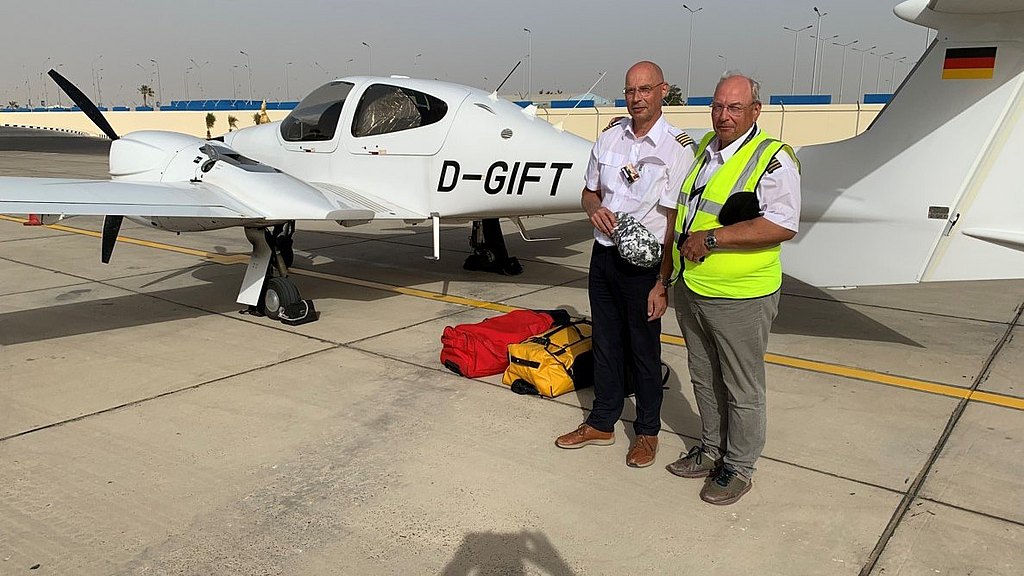
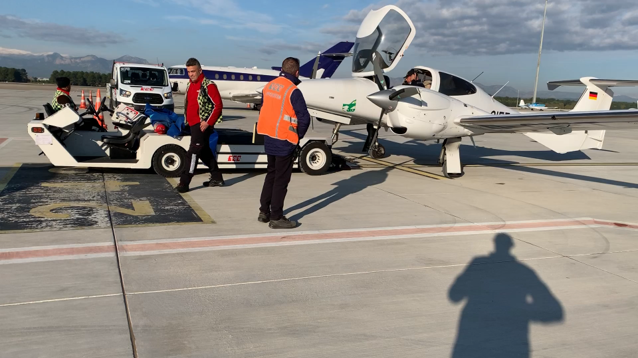
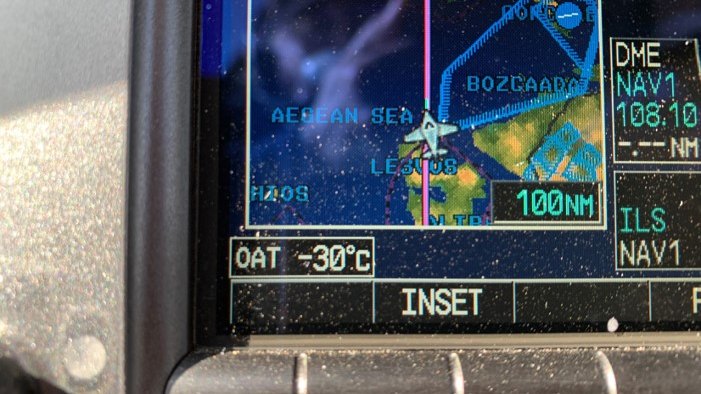
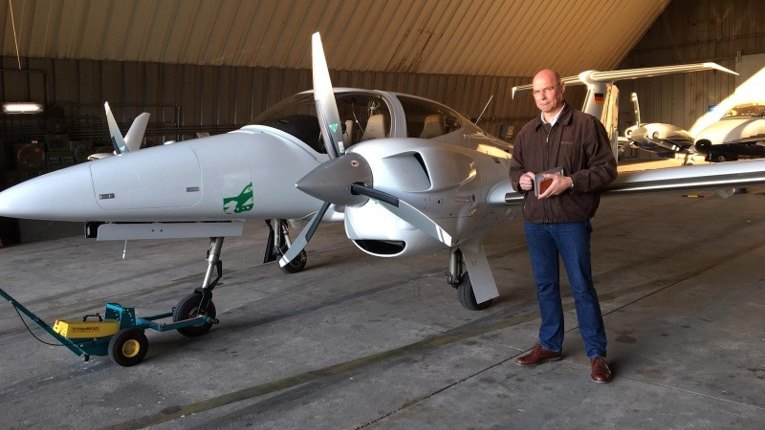
Summary
Yes, we will do it again!
We planned this trip as a test for our earth rounding challenge in 2021. It was very nice and impressive with a lot of beautiful nature, fun challenges, clouds and bureaucracy to deal with.
The DA42-VI is superb, we didn’t have any issues – except the cabin width maybe, but that means we would have to look for a DA62 :-) Well, and the MTOW can be challenging and I would wish for an improved start run. Since you do have short runways and sometimes grass or sand, it would be nice to improve the performance. A nice benefit of flying a jet fuel aircraft is that you don’t have to go to the fuel station. You just park and wait for the fuel truck to arrive. The fuel consumption of this aircraft is just marvelous. You can reduce the power and see your range at the screen. We even flew 1,220 Nm at 60% in 7 hours with 15 Gal reserve. So, we could fly for another 1:30 hours. This means an average of 10,15 Gal/hour of jet fuel for the cost $ 0,70/Litre in Africa. So, only this is $ 27/hour.
Picture Credit: Marcel Warmerdam
Disclaimer: The views and opinions expressed in this article are those of the author(s) and do not necessarily reflect those of the Diamond Aircraft Group and its employees. The Diamond Aircraft Group is not responsible and does not verify for accuracy of any of the information contained in the article. A liability or guarantee for the topicality, correctness and/or completeness of the provided information and data is excluded. Diamond Aircraft Group is not liable for direct or indirect damages resulting from the use of the information or data found on this website/ blog. There are no rights and obligations between Diamond Aircraft Group on the one hand and the user of the website or third parties on the other hand. This declaration applies to all links on this website.
Share your stories with us!
Do you have a Diamond story, pictures or video to share for our #DiamondDiary? We'd love to hear from you at airmail@diamondaircraft.com.
